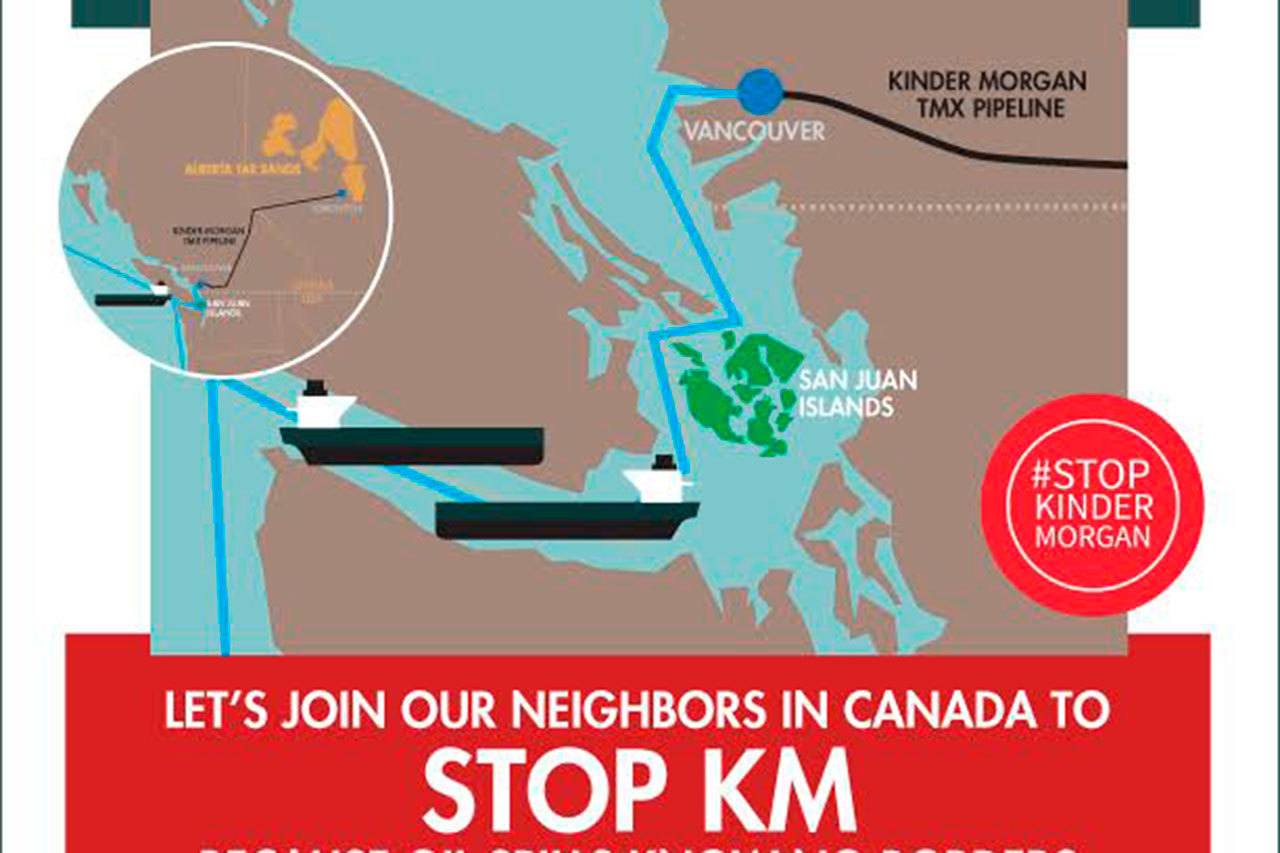The fight against fossil fuels is moving west.
The Friends of the San Juans, which is an environmental advocacy group based on San Juan Island, held a series of “action pods” on Orcas, Lopez, Shaw and San Juan to hear community feedback this December.
Islanders stated that the Kinder Morgan’s Trans Mountain Pipeline was a major concern.
“We’re taking all the risk, we’re not getting any of the benefits here and we’re losing a lot of sleep,” said Friends Executive Director Stephanie Buffum. “I’m really sensing the islands are ready to take action [against the pipeline]. It’s really critical we get this rolling.”
Running from Northeastern Alberta’s Athabasca Oil Sands to Burnaby, British Columbia, the current Trans Mountain Pipeline can transport 300,000 barrels per day (one barrel equals 42 gallons). With the proposed expansion, the pipeline’s transportation capacity would increase to 890,000 barrels per day.
“[The pipeline] is a big deal in Canada, but not down here,” said Friends board member Michael Riordan, encouraging people to write letters to local politicians protesting the pipeline expansion. “Our senators – I think – are both behind us on this.”
Canada’s Prime Minister Justin Trudeau approved the expansion on Nov. 29, with the stipulation that the company must meet 157 conditions laid out by the National Energy Board in its May 2016 approval. Oil tankers passing the shores of the San Juan Islands will likely increase from five a month to 34.
“It will be a large spill and our waters would be an unmitigated ecological disaster,” said Riordan. “There’s no science, there’s no evidence that they can clean up a spill, should it happen.”
Riordan referenced a diluted bitumen spill in Michigan, which was caused by a burst pipeline, as the closest indicator of what could possibly happen should there be a spill in the Salish Sea.
According to the U.S. Environmental Protection Agency, in July of 2010, an estimated 1,181,559 gallons of diluted bitumen spilled into a tributary of the Kalamazoo river. Of that spill, 766,228 gallons were able to be removed from surface water, while an additional 435,000 gallons of oil had to be removed from soils, debris and through treatment of contaminated waters. Additionally, sediment dredging was required for several years afterward to conclude the cleanup process.
According to documentation Friends distributed at its meetings, there were 11,580 vessels passing through the Salish Sea annually in 2015. With 20 proposed fossil fuel and natural gas projects around the sea – primarily originating in Canada – an additional 4,286 vessels are predicted to be added to the existing traffic.
“When we’re talking about potential oil spills, a lot of it is just the amount of fuel in the tank,” said Buffum. “That’s just as alarming as the actual product it is carrying.”
Buffum added that there’s no one better to speak to this than the people who live in the San Juan Islands because they live in the middle of it all. Friends plan on joining other area conservation organizations in protesting the pipeline both in and out of court. Writing letters to state and national politicians, supporting litigations against the companies hoping to expand vessel traffic and organizing in-person protests in Bellingham and Vancouver are all actions Friends is considering.
“Canada is making a lot of noise about this … we are not making enough noise on this side of the border,” said Buffum. “We are the mouse that roars.”
To donate to Friends of the San Juans’ Safe Shipping Program go to https://goo.gl/Y0CCif – all donations through the rest of the year will be matched up to $25,000.



